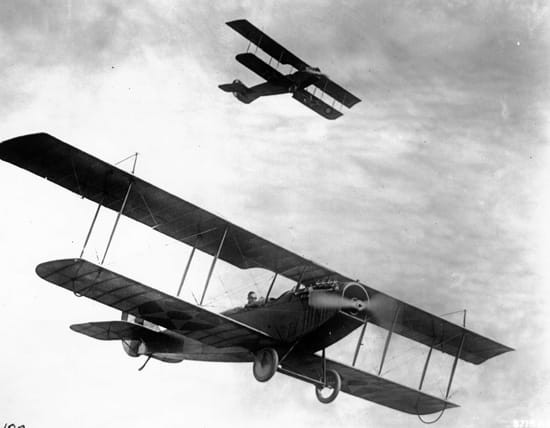- The 1925 Serum Run to Nome is remembered for dog sled teams, but aircraft were also considered, marking aviation’s tentative role in medical transport.
- Two Curtiss JN-4 “Jenny” biplanes were available, yet extreme cold made them unsafe, highlighting early aviation’s technological limits.
- Aviation had already delivered medicines during the 1918–1919 Spanish flu, showing its potential despite scattered, improvised use.
- Nome demonstrated aviation’s promise but underscored the reliability of sled dogs, with bush planes only proving viable for medical flights in the 1930s.
- The episode symbolises the dawn of pharmaceutical air transport, bridging desperate improvisation with aviation’s eventual role in global healthcare.
When the 1925 Serum Run to Nome is recalled, they almost always think of sled dogs cutting across frozen Alaskan wilderness, braving temperatures that plunged below minus 40 degrees, with teams led by men such as Leonhard Seppala and Gunnar Kaasen. The tale is remembered as one of huskies and their drivers racing through ice and darkness to save a community from diphtheria. What is less well remembered is that aircraft were also considered as a means of delivering the lifesaving antitoxin. Though ultimately sidelined by circumstance, the aircraft’s role in that episode stands at a curious intersection in the history of pharmaceuticals in flight, linking the daring improvisations of the Spanish flu years with later, more reliable medical airlifts.
By the early 1920s, aviation was still very young. The Great War had accelerated development of aircraft, turning them from fragile novelties into machines capable of carrying weight and weathering modest distances. Yet they remained notoriously unreliable. Engines often froze, wings iced up and wooden structures strained against rough landings. Still, the potential was obvious: in a land as vast and inhospitable as Alaska, the thought of using an aircraft to cut days from a journey held real promise.
When word spread in January 1925 that Nome faced a diphtheria outbreak, officials in Alaska and Washington knew time was of the essence. The nearest supply of antitoxin lay hundreds of miles away in Anchorage. By train it could be brought as far as Nenana, but the last leg of some 674 miles remained perilous. The governor of Alaska, Scott Bone, considered all options, and among them was air transport. Two biplanes belonging to the Alaska Railroad’s aviation section, both ageing Curtiss JN-4 “Jenny” aircraft left over from wartime training, were standing by. These machines, designed nearly a decade earlier, were open-cockpit, fabric-covered and ill-suited to the brutal Alaskan winter. They had neither heated cabins nor reliable means to prevent engines freezing. To send them out into storms that grounded even hardy bush pilots seemed reckless. In the end, authorities decided to rely on dog sled relays, a system with deep roots in Alaska and proven resilience in subzero conditions.
Thus the planes were left unused, their presence reduced to a footnote in the famous relay. Yet the mere fact they were considered is significant. It speaks to a growing awareness that aviation could, in time, serve as a lifeline for pharmaceuticals. That moment in Nome marked a bridge between hesitant early experiments and the later routine carriage of drugs and vaccines by air.
The idea of medicines taking to the skies was not entirely new in 1925. During the influenza pandemic of 1918–1919, there are scattered reports of aircraft being employed to deliver medical supplies to communities cut off by snow or poor infrastructure. The Spanish flu, which killed tens of millions worldwide, created urgency on a scale previously unknown. Governments, military authorities and local health officials tried every means available to hasten delivery of vaccines, antitoxins and palliatives. In the United States, for instance, Army Air Service pilots made flights carrying vaccines and other medical goods to rural posts. In Canada and parts of Europe too, small aircraft were sometimes called upon for emergency transport. These early flights are hard to document with precision, not least because they were often improvised and reported only briefly in local newspapers, but they represent the earliest known instances of pharmaceuticals being flown by air.
Moments of desperation
Compared to those tentative experiments, the Serum Run demonstrated both the allure and the limitations of aviation in 1925. In theory, an aeroplane could have carried the entire supply of serum from Nenana to Nome in a matter of hours. In practice, with temperatures so low that even the sled drivers suffered frostbite, the risk of an engine seizing mid-flight was intolerably high. Wooden struts could snap in the cold, lubricants would thicken, and visibility could vanish in minutes. Against such odds, the sturdy reliability of sled dogs won the day. The final handover of the serum to Nome’s Dr Curtis Welch was made not from an aircraft’s cargo hold but from the frostbitten hand of a musher.
Yet, the presence of the aircraft lingered in memory. Within just a few years, more powerful and weather-resistant bush planes began to prove themselves in Alaska. By the 1930s, pilots such as Noel Wien were flying medicines, mail and passengers regularly across terrain once thought impassable. What was a missed opportunity in 1925 soon became routine practice, reshaping healthcare in remote communities. It is fair to say that the Serum Run, though accomplished on the ground, helped plant in public consciousness the notion that in future an aircraft could be as vital a courier of medicine as any train or sled.
The broader picture is that both the Spanish flu and the Nome crisis showed how aviation intersected with medicine at moments of desperation. The pandemic had revealed, in scattered fashion, that air transport could shorten delivery times when no other route sufficed. Nome demonstrated the idea again, even if only as a plan shelved in favour of tradition. Taken together, they chart the uncertain dawn of medical air transport: one marked by brave improvisation, technological shortfall, and the constant tension between promise and practicality.
Today, the concept of flying pharmaceuticals is so familiar as to be unremarkable. Vaccines, blood, and medical equipment move daily by jet and by helicopter. In remote parts of Africa, drones now ferry blood products across rivers and mountains. In such a world, it is easy to forget that less than a century ago, the choice lay between an experimental aircraft with a frozen engine and a team of dogs straining against the wind. The 1925 Serum Run therefore stands not only as a tribute to the dogs but as a reminder of aviation’s early struggles to claim its place in the fight against disease.





